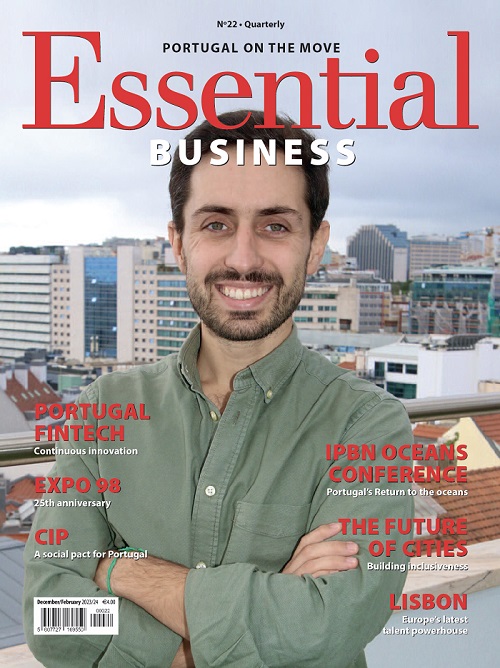The prospects and expectations for Portugal’s economy in 2023 – “We must nurture our relations with the US market”
Portugal’s economy has been remarkably resilient despite adverse headwinds, but improving competitiveness, productivity and investment attraction must be the top priorities for economic leaders and policy makers.
This was the message from the President of the American Chamber of Commerce in Portugal (AmCham), António Martins da Costa who gave an overview and forecast for the Portuguese economy for 2023.
Addressing a select number of business leaders on Friday at a debate entitled ‘Expectations and Prospects for 2023’ attended by Portuguese entrepreneurs and the CEOs of American companies operating in Portugal (see article to be published on Wednesday, March 8), António Martins da Costa highlighted the importance of Portuguese companies taking care of business and nurturing relations with the US which is the largest economy in the world and Portugal’s fourth most important trading partner.
Going in the right direction
A numbers crunch for the Portuguese economy In 2022 shows that Portugal’s total GDP was €240.8Bn, total debt (companies and public sector minus financial sector) stood at €254Bn in terms of percentage of GDP, and Government debt is €114.7Bn. The public deficit was at 1.5% of GDP, and that from a microeconomic point of view said: “Things are going in the right direction”.
There are “important gaps”, for example, Portugal’s GDP per capita is 75% of the European average, and while Portugal’s unemployment rate at 6% “isn’t too high, it is starting to show an upward trend”.
Portugal has also seen an increase in the minimum wage to around €10,000 per annum, while the average salary of €22,000 per annum had not really risen significantly.
From a political point of view the situation is “stable” with a “majority government”, but from a social point of view “fissures and fractures have been appearing which are worrying”, he warned.
Inflation had reached 7.8% in 2022, with ECB interest rates having an impact on loans, particularly mortgages, but also company loans. (2.5%), but lower than in the US (4.5%), but nevertheless this is “putting pressure on the purchasing power of families”.
Tough decisions on public policy
The Government, he said, “Will have to take decisions on public policies that will ensure wealth creation and growth in Portugal, particularly ones that put Portugal on the path to growth in productivity”.
Another problem stemming from the loss of incomes at salary levels is that: “Portugal is finding it difficult to retain talent” with highly qualified young people “going overseas, attracted by higher wages” and career advancement opportunities.
Portugal also has demographic problems requiring immigration which is starting to happen, but the migrants are “less qualified than the ones that are leaving”, and from the point of view of social security and the public health system is “not that sustainable, with these contributing less towards the system”.
“To generate wealth and growth there needs to be an increase in competitiveness and modernisation. One of the instruments geared towards achieving this is Portugal’s Recovery and Resilience Plan (over €16Bn in grants and loans between 2021-2026), but delivery of funds is “taking considerable time to reach the real economy”, partly because of bureaucracy, supervision of the use of funds, and partly down to some inefficiencies”, he said.
Trade with and from the US
The other need is to attract overseas investment (Portugal is own-capital poor) and here the United States has had a major role in attracting FDI to Portugal.
“Over the past few years the US has brought in investment of between €1.2Bn and €1.6Bn to the Portuguese economy. In terms of stock, the figure stands at around €7-8Bn, with lots of investment in technological areas”, said Martins da Costa.
There are currently around 1,000 US companies in Portugal, employing around 50,000 employees, with half of them set up in Portugal for at least 10 years, one-quarter of them for over 20 years. “We have a strong relationship”.
But there are also Portuguese companies trading in the US, and from statistics published at the end of 2022, there are 3,722 companies that export across the pond.
These Portuguese companies were responsible for over €5Bn in goods and around €4Bn in services. Exports from Portugal to the US are currently in the region of €8-9Bn and has turned America into the fourth largest destination for Portuguese exports after Germany, France, and Spain, and the largest outside of the European Union, in front of the United Kingdom.
In terms of imports, the situation is somewhat different, the balance of trade is in Portugal’s favour, meaning Portugal exports much more to the US than it imports. Total imports of goods stood at €3.5Bn, and services at between €1.5Bn and €2Bn.
A magnet for US tourists
Another indicator worth emphasising is the number of US tourists visiting Portugal in 2022 after the pandemic grew exponentially to 1.5 million, spending almost €2Bn in revenues for Portugal’s tourism sector.
“The relationship between the US and Portugal is a solid one, one that is growing, and we should nurture it because we need overseas investment, particularly from the US, a country that represents one-quarter of the world’s GDP”, he stressed.
Looking at the forecast statistics from the US Chamber of Commerce, Martins da Costa forecast a mild recession in the middle of 2023, although the first quarter will be one of growth (0.4%), with the second and third quarters also with mild growth in GDP, so that by the end of the year growth is expected to be at around 0.5% and 1.6% in 2024, averaging 2.4% to 2027.
“The US economy is one that has a capacity for resilience and can adapt to the difficulties that have been experienced because of the war in Ukraine, inflation, and higher interest rates”.
However, “Not everything occurring and influencing the US economy can be transferred to the Portuguese reality”, concluded the President of AmCham, António Martins da Costa.










